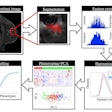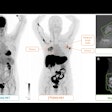
Implementing a same-day breast biopsy program can reduce healthcare disparities due to race/ethnicity or insurance, according to a study published in the November issue of the Journal of the American College of Radiology.
And even though a same-day program can be tricky to establish, it's worth it, wrote a team led by Dr. Brian Dontchos of Massachusetts General Hospital in Boston.
"A same-day biopsy program can be challenging to implement given limited physician and support staff resources and the general unpredictability of which patients undergoing diagnostic imaging will require biopsy," the group wrote (JACR, November 2019, Vol. 16:11, pp. 1554-1560). "Nevertheless, advantages inherent to a same-day biopsy program include decreased time to diagnosis, minimized patient handoffs, retained patients in a breast imaging practice, and decreased patient travel time. In addition, distress and anxiety as patients await biopsy results is reduced."
Typically, breast biopsies are done days or weeks after they've been recommended, the team wrote. But this pattern may contribute to healthcare inconsistencies, with women receiving different levels of care depending on their social or demographic characteristics, Dontchos and colleagues noted.
"Delays in breast cancer diagnosis and treatment have been demonstrated across multiple patient subpopulations and are associated with adverse outcomes," the group wrote. "The most established disparities are seen in racial/ethnic subpopulations."
The researchers sought to measure the impact of a same-day biopsy program on disparities in time from biopsy recommendation to performance. They conducted a study that included all diagnostic breast imaging exams that led to biopsy before a same-day biopsy program was put into place (695 taken between September 2016 and March 2017) and after (534 taken between September 2017 and March 2018). The researchers compared characteristics such as age, race, language, and insurance and information such as days from biopsy recommendation to biopsy and proportion of same-day biopsies in all biopsies in both the preimplementation and postimplementation groups.
The new biopsy program significantly reduced time to biopsy (p < 0.001). The group also found that during the preimplementation timeframe, patients of color and those with Medicare were associated with longer days to biopsy (nonwhite patients, 2.31 days longer than white patients; Medicare patients, 2.47 days longer than privately insured patients). After the same-day biopsy program was put into place, these disparities disappeared, the team found.
| Impact of same-day biopsy program on time to biopsy | ||
| Variable, all patients | Prior to same-day program | After same-day program |
| Mean days to biopsy | 9.6 | 3.6 |
| Percentage of same-day biopsies | 11% | 51% |
The study results show that intervention such as a same-day biopsy program can work to mitigate healthcare disparities, according to Dontchos and colleagues.
"The strongest approaches to disparity reduction in breast cancer diagnosis and treatment include combinations of access-enhancing interventions (e.g., mobile mammography vans, same-day appointments, and patient navigators) and individual-directed interventions (e.g., lay language counseling, vouchers, and bus passes)," the team concluded. "Our findings not only support established racial/ethnic disparities in breast cancer diagnosis and treatment but also support that access-enhancing interventions are effective."




















